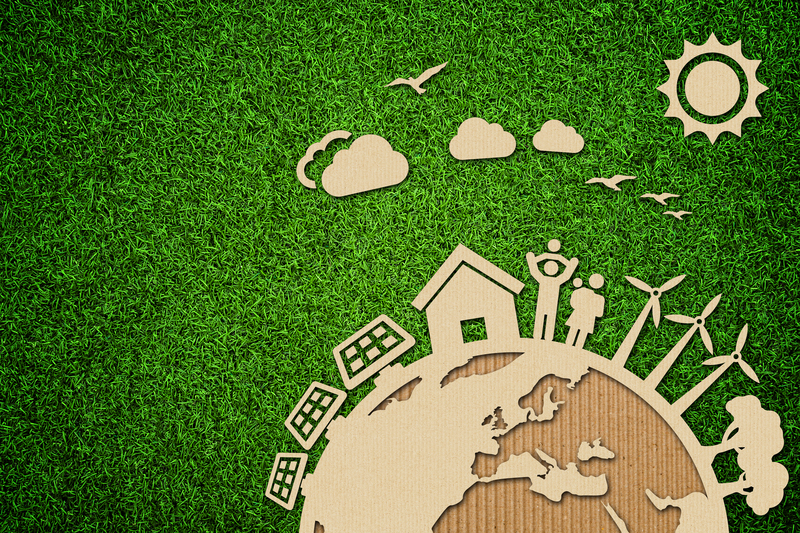Reduce, Reuse, and Responsibly Dispose of PPE Waste: Essential Practices for a Sustainable Future
Personal Protective Equipment (PPE) has become a daily necessity in healthcare settings, workplaces, and even our homes. While its role in protecting against infectious diseases and hazardous materials is undeniable, the environmental repercussions of improper PPE waste management have rapidly intensified. This comprehensive guide explores how to reduce, reuse, and responsibly dispose of PPE waste to safeguard both human health and the planet.

Understanding PPE Waste: The Growing Concern
The surge in the use of PPE - such as masks, gloves, gowns, and face shields - especially during global health emergencies, has contributed to a new wave of pollution. The majority of these items are made from single-use plastics that are not biodegradable, and their improper disposal has severe consequences for ecosystems, wildlife, and public health.
- Plastic pollution: PPE, mainly composed of polypropylene and polyethylene, can take hundreds of years to decompose.
- Marine hazards: Discarded PPE can end up in water bodies, harming marine life that ingests or becomes entangled in the waste.
- Landfill overload: Single-use PPE contributes significantly to the volume of non-recyclable waste in landfills.
Addressing the environmental challenges of PPE starts by implementing the three R's: Reduce, Reuse, and Responsible Disposal.
Strategies to Reduce PPE Waste
1. Assessing the Actual Need for PPE
To reduce personal protective equipment waste, it's vital to determine when and where PPE is genuinely necessary. Using PPE only when warranted, instead of as a default, helps cut down on unnecessary consumption.
- Conduct risk assessments to identify when PPE is essential.
- Implement engineering and administrative controls to minimize situations requiring personal protection.
2. Switching to Reusable Alternatives
One effective way to limit waste is to choose reusable PPE options wherever possible:
- Cloth masks: These can be washed and worn multiple times, making them ideal for the public outside clinical settings.
- Reusable gowns and face shields: Many medical facilities now use washable gowns and sanitize face shields between uses.
- Industrial PPE: Some respirators, gloves, and protective glasses are designed for repeated use following proper cleaning protocols.
Switching to reusable products not only reduces the volume of PPE waste but also leads to significant cost savings over time.
3. Minimize Packaging Waste
Often, PPE items come individually packaged in plastic. Work with suppliers to procure PPE in bulk with reduced packaging, or select brands that use eco-friendly materials. Every little reduction in packaging minimizes the total waste footprint.
4. Educate and Train Users
Awareness programs and proper training can have a profound impact on consumption patterns. Educate staff, patients, and the public about the environmental harm from improper disposal and ways to reduce PPE waste by using equipment responsibly.
Reusing PPE: Best Practices and Innovations
1. Safely Extending PPE Life Cycles
While some PPE is intended for single use, advances in cleaning and sterilization technologies are making it possible to extend the life of certain PPE items without compromising safety. For instance:
- Hospitals may use vaporized hydrogen peroxide to decontaminate N95 masks for limited additional uses.
- UV-C light devices are being deployed to disinfect goggles and face shields.
However, it is critical to follow manufacturer guidelines and regulatory recommendations regarding the number of reuses and the effectiveness of sanitization methods.
2. Innovations in Reusable PPE Design
The market is responding with innovative reusable PPE solutions. Designers and manufacturers are creating masks with replaceable filters, antimicrobial materials, and easily sanitized components. These products are engineered to balance safety, comfort, and sustainability.
3. Community and DIY Solutions
Many communities have organized initiatives to produce fabric masks and face coverings. By supporting local efforts or making your own, you contribute to reduced demand for disposable PPE and foster community resilience.
*Important note: Always ensure that reused PPE maintains its protective integrity and complies with relevant safety standards.*
Responsible Disposal of PPE Waste
1. Segregate PPE Waste Correctly
Proper segregation is the cornerstone of responsible PPE disposal. PPE waste, especially from healthcare settings, may carry infectious agents. Therefore:
- Place used PPE in clearly labelled "Hazardous" or "Infectious" waste bins.
- Ensure bins are covered and not accessible to unauthorized personnel or animals.
- Do not mix PPE waste with general recyclables or organic waste.
2. Utilize Local Waste Management Systems
Most municipal systems have specific guidelines for the disposal of PPE waste. Familiarize yourself with:
- Local regulations for disposing of masks, gloves, and other protective items.
- Special collection programs for medical or hazardous waste.
In some regions, single-use PPE from households may be sealed in a plastic bag and placed in general waste, but never in recycling.
3. Encourage Workplace Collection Programs
Businesses and organizations can play a significant role by offering PPE waste collection points. Partnering with certified disposal contractors ensures waste is incinerated or treated in a manner that neutralizes infectious agents and plastic pollution.
4. Do Not Litter or Flush PPE
Littering PPE in public spaces or flushing items down the toilet is both illegal and hazardous to the environment. Always seek designated disposal bins.
5. Support PPE Recycling Initiatives
Although recycling PPE is challenging due to contamination and material composition, innovative programs are emerging:
- Specialized recycling companies are able to process used PPE into construction materials, fuels, and other products.
- Some organizations offer mail-back programs for PPE waste, ensuring responsible end-of-life treatment.
Encourage participation in these initiatives and advocate for expanded government and private sector involvement.
The Broader Impact: Why PPE Waste Management Matters
1. Environmental Protection
PPE waste left unmanaged threatens natural habitats, contributes to microplastic contamination, and undermines efforts to combat global waste pollution. Reducing, reusing, and responsibly disposing of PPE waste is critical for protecting ecosystems and biodiversity.
2. Safeguarding Public Health
PPE waste is not just an environmental concern; it is a public health issue. Improper disposal can spread infection, harm sanitation workers, and lead to hazardous exposure for the general public. Responsible management mitigates these risks.
3. Economic Benefits
Waste minimization strategies save money in the long run. Organizations benefit from lower procurement and disposal costs, while governments reduce expenditures on landfill management and cleanup operations.
How You Can Make a Difference
Every individual, organization, and government entity has a role to play in mitigating the negative effects of personal protective equipment waste. Here are practical steps you can take:
- Select reusable PPE whenever possible, especially in non-medical settings.
- Educate yourself and others about proper PPE use, care, and disposal.
- Advocate for better waste management systems in your workplace, community, and municipality.
- Support companies and brands that prioritize eco-friendly PPE design and packaging.
- Participate in or launch initiatives that promote the three R's - Reduce, Reuse, and Responsibly Dispose - in your local area.

Future Trends: Towards a Circular PPE Economy
As awareness grows, so does innovation in sustainable PPE. Researchers are developing biodegradable alternatives, such as masks and gloves made from plant-based materials. Investments in advanced recycling technologies are making it easier to process contaminated plastics. Ongoing collaboration between the public and private sectors will be essential to drive the development and adoption of these solutions.
Moving towards a circular economy for PPE means shifting from a make-use-dispose model to one where products are designed to be reused, repaired, or recycled, reducing the need for virgin materials and minimizing waste.
Conclusion: Take Action on PPE Waste Today
The responsibility to reduce, reuse, and responsibly dispose of PPE waste falls on all of us. Simple changes in habits, institutional policies, and procurement choices can make a huge difference for the health of people and the environment.
By:
- Choosing reusable and sustainable PPE,
- Educating and encouraging others,
- Following proper waste segregation and disposal methods,
- Supporting innovative recycling and waste management programs,
We can turn the tide on PPE pollution and set a new standard for environmental responsibility during and after times of crisis.
Protect yourself and the planet--commit to responsible PPE waste management today!